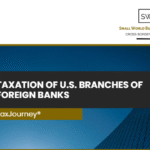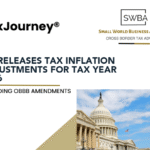The One Big Beautiful Bill Act (OBBBA) represents a turning point in American tax policy, moving theoretical reform into legislation. Its measures revive and improve key tax incentives, such as 100% bonus depreciation, permanent Section 179 expensing, reinstated EBITDA-based interest deductibility, and enhanced Qualified Small Business Stock (QSBS) exclusions, that business buyers and sellers are now forced to factor into deals. These developments rebalance purchase price allocations, priorities for due diligence, and valuation models, especially in asset-heavy or pass-through deals common in M&A. What were once tax tailwinds or modest adjustments are now core drivers of deal economics.
In a post-OBBBA environment, M&A planning needs sophisticated tax planning throughout the board, from term sheet negotiation to integration and exit modelling. Buyers must project how leveraged finance and accelerated expensing affect cash flow and return projections; sellers may need to change structures to exploit QSBS benefits or preserve pass-through deductions. Cross-border investors now face new challenges to navigate with the impact of updated GILTI rules and reevaluated FTC structures. Simply put, tax expertise incorporated into valuation, financing, and structuring is now a critical part of successful deal execution, not an afterthought, but a foundational element of M&A strategy.
Quick Takeaways
- 100% Bonus Depreciation → Immediate asset expensing
- Section 179 Expensing → Increases capital investment efficiency
- EBITDA-Based Interest Caps → Impacts financing models
- QSBS Benefits → Tax-free gains optimization
Evolving Tax Landscape Under ‘One Big Beautiful Bill’ – A Snapshot of Structural Tax Changes
Key Tax Changes Relevant to M&A
- 100% Bonus Depreciation & Section 179 Expansion: OBBBA reinstates 100% bonus depreciation for qualifying properties acquired in after January 19, 2025 (with a transitional 40%/60% election available for the first tax year ending after that date), and doubles the Section 179 expensing cap to $2.5M (phase-out begins at $4M). M&A Implication: Buyers of asset-heavy businesses can now front-load tax deductions, enhancing post-deal cash flow—but these benefits can create tension during purchase price allocation, as sellers may seek to minimize depreciation recapture.
- State & Local Tax (SALT) Cap Relief and PTET Preservation: The SALT cap increase to $40,000 is temporary (2025–2029), with a phase-down for incomes above $500,000 and potential reversion to $10,000 afterward, and pass-through entity tax (PTET) workarounds remain intact. M&A Implication: Sellers structured as pass-throughs in high-tax states retain valuable tax efficiency, aiding negotiation and valuation in asset sale structures.
- Permanent QBI Deduction (Section 199A): The 20% Qualified Business Income deduction for pass-through entities is now permanent. M&A Implication: Reduces effective tax exposure for seller entities, smoothing structural discussions and potentially enhancing seller net proceeds.
- Immediate Expensing of R&D Costs: Domestic R&D costs are fully deductible in the year incurred (no longer amortized over five years), effective for tax years starting after 2024. M&A Implication: Targets in innovation-driven sectors become more attractive to buyers due to improved after-tax earnings projections.
- Interest Deductibility Based on EBITDA: The more generous EBITDA-based limit is restored for business interest deductions (as opposed to the narrower EBIT test). M&A Implication: Enables higher leverage capacity within deals-especially for PE-backed acquisitions by expanding interest deductibility.
- Cross-Border and FTC/NCTI Changes: While not M&A-specific, the revamp of GILTI to Net CFC Tested Income (NCTI), enhanced Foreign Tax Credit mechanics, and revised treatment for mid-year CFC dispositions. M&A Implication: Affects deal structuring considerations for cross-border transactions, particularly for global fund or multinational entity buyers.
How These Reforms Reshape Transactions
| M&A Impact Area | Key Tax Change | Deal-Level Implication |
| Purchase Price Allocation | Bonus depreciation & R&D expensing | Buyers may request asset-heavy allocations; seller recapture risk must be managed |
| Valuation Modelling | R&D, EBIDTA deduction shifts | Buyers must revisit DCF models to incorporate tax-boosted cash flows |
| Financing Flexibility | EBITDA vs EBIT limits | PE buyers gain increased leverage capacity and improved interest smoothing |
| Target Pool Attractiveness | QBI, R&D, depreciation tools | Innovation-rich and capital-intensive targets become more attractive |
| Cross-Border Strategy | NCTI/FTC revisions | Global M&A stakeholders need to reassess entity structuring to optimize tax |
Increased Compliance & Reporting Focus
While not as M&A-specific, some measures demand closer attention from advisors:
- Expanded Reporting for Partnerships & Entities: Required disclosures (such as for Qualified Opportunity Funds) and penalty structures are now larger.
- Operational Diligence: Buyers must assess whether targets can support the required tax accounting, reporting, and audit readiness under the new rules.
Key Impacts of OBBBA on M&A Deals
A. Deal Structuring Adjustments
- Asset Deals Become Even More Attractive – With OBBBA restoring 100% bonus depreciation permanently and increasing the Section 179 expensing limit to $2.5 million, purchasers can hasten tax recovery and enhance cash flow following an acquisition. This tax benefit also shifts deal structures more towards asset acquisitions, as acquiring firms want to “step up” asset bases to maximize deductions.
- Negotiation Dynamics – Price Allocation Tensions – Acquirers prefer asset-biased allocations, whereas sellers prefer to minimize depreciation recapture exposure. This phenomenon increases in OBBBA’s tax regime, introducing intricacies into purchase price allocation (PPA) deal negotiation.
B. Valuation Dynamics
- By bringing back full bonus depreciation, the OBBBA increases the appeal of asset-intensive companies (such as manufacturing or high R&D), whose valuations could be raised. Enhanced depreciation treatment and leverage flexibility can lower purchaser financing costs and enhance returns.
- Impact on Buyers: Improved cash flow expectations after purchase.
- Impact on Sellers: Higher valuations and more buyer competition for targets with high capital bases.
C. Cross-Border Transaction Complexities
Internationally, OBBBA brings important changes that have a direct impact on cross-border M&A:
- GILTI is replaced by Net CFC Tested Income (NCTI), expanding taxable reach of CFC income.
- Improved Foreign Tax Credits (FTC): eliminates previously mandatory allocations of interest & R&E expense, facilitating increased credit availability.
- Pro-rata allocation of income for mid-year CFC sales, adding complexity to deal-year tax planning.
- These changes have an impact on structuring considerations, requiring close tax modelling in cross-border transactions.
D. QSBS Benefits & Exit Strategies
OBBBA strengthens Qualified Small Business Stock (QSBS) provisions, directly influencing deal planning and exit strategies in M&A. These revised benefits apply to stock issued after July 4, 2025; earlier issuances retain the original 5-year/100% rule without partial exclusions. Key Impacts on M&A:
- Higher Tax-Free Gains – The exclusion cap rises from $10M to $15M, making equity exits more lucrative.
- Broader Eligibility – The gross asset threshold increases from $50M to $75M, allowing more companies to qualify for QSBS benefits.
- Faster Exit Opportunities – Partial gain exclusions are now available after 3–4 years, enabling earlier monetization of investments.
- This expansion boosts valuations for high-growth companies, makes startups and mid-sized businesses more attractive acquisition targets, and provides buyers and sellers with greater deal structuring flexibility to optimize returns.
Due Diligence Imperatives
Enhanced Focus on Tax Due Diligence Under OBBBA:
Under the OBBBA framework, comprehensive tax due diligence has become a critical requirement for securing successful M&A transactions. The permanence of key provisions, such as bonus depreciation, Section 179 expensing, and EBITDA-based interest limitations, introduces new tax planning opportunities but also creates potential areas of risk if not thoroughly evaluated.
Structural tax changes, including the transition from GILTI to NCTI, enhanced availability of foreign tax credits, and accelerated depreciation rules, require rigorous assessment during due diligence. These factors directly influence pricing strategies, deal structuring, indemnity negotiations, and overall transaction viability.
Additionally, reforms to depreciation and financing regulations may significantly affect enterprise valuations. Valuation models now need to be recalibrated to reflect updated cash flow expectations and the integration of new tax mechanisms, underscoring the need for heightened scrutiny when aligning a target’s financial and tax profiles under the OBBBA regime.
Identifying Hidden Liabilities in Advance to Prevent Post-Deal Disputes:
Reinstated tax provisions by OBBBA may lead to book-tick, tax-whack mismatches, concealed liabilities, or distortions in reported earnings.
Since bonus depreciation and accelerated write-offs of R&E are now available, buy-side teams need to ensure that targets don’t unintentionally misreport deferred tax liabilities or misallocate expenses, which can cause post-close adjustments.
Effective due diligence requires moving beyond surface-level financials to evaluate underlying tax positions, especially when assessing asset-heavy or highly leveraged targets.
AFSI Considerations in Partnership-Based Deal Structuring:
While the term Adjusted Financial Statement Income (AFSI) is not explicitly discussed in many OBBBA-related resources, its relevance in partnership-driven M&A transactions is significant. Under the OBBBA framework, the conversion of GILTI to NCTI and modifications to foreign tax credit rules directly affect multi-tiered structures and foreign-controlled entities.
For purchasers, accurately evaluating AFSI calculations before and after OBBBA implementation is critical to understanding the true tax exposure of the target entity. This becomes especially important in private equity and partnership-based deals, where non-corporate entities may now report materially different taxable income. Such discrepancies can directly impact waterfall models, GP/LP distributions, and projected cash flows, making thorough analysis and modelling a key component of successful deal structuring.
Risk Mitigation & Strategic Planning
OBBBA has reshaped the tax landscape, increasing the need for deeper due diligence and forward-looking planning. From modeling deal structures to mitigating hidden tax risks, the following strategic priorities outline how buyers and sellers can better navigate complex M&A environments.
| Strategic Area | Key Focus | Impact on M&A | Recommended Actions |
| Deal Model Flexibility | Integrating OBBBA-related variables like depreciation reforms, EBITDA caps, and NCTI adjustments | Shifts taxable income projections and impacts overall deal valuations | Build dynamic deal models with multiple scenarios to assess exposure levels |
| Tax Optimization Opportunities | Utilizing elections, credits, and structuring options under OBBBA | Potential to minimize tax liabilities and maximize post-deal returns | Evaluate Section 179, bonus depreciation, and FTC provisions during planning stages |
| Cross-Border Considerations | Adapting to revised foreign tax credits and tax requirements | Impacts financing structures and global effective tax rates | Coordinate early with cross-jurisdictional tax advisors to mitigate compliance risks |
| Regulatory Monitoring | Ongoing modelling of OBBBA variables and deal-year effects (e.g., interest, depreciation, CFC allocation) | Minimizes risk of unexpected exposures or post-deal disputes | Establish continuous monitoring and update deal documents as guidance evolves |
| Risk Containment Measures | Identifying hidden tax risks during due diligence | Ensures accurate pricing and reduces potential indemnity claims | Deep tax diligence on bonus depreciation/§179, interest-limit impacts, and cross-border NCTI/FTC modelling. |
Strategic Outlook On M&A In A Changing Tax Landscape
As the One Big Beautiful Bill Act (OBBBA) continues to take shape in practice, its influence on M&A dynamics is set to extend well beyond current deal structures. The permanence of provisions such as accelerated expensing, EBITDA-based interest deduction rules, and enhanced pass-through incentives is already reshaping valuation benchmarks and financing strategies. Dealmakers who anticipate these shifts and proactively adapt their models will be better positioned to achieve competitive valuations, optimize capital structures, and execute transactions designed to withstand evolving tax frameworks.
Moreover, the legislative and regulatory landscape remains fluid, with forthcoming IRS guidance and interpretive updates expected to refine OBBBA’s practical application. This makes continuous tax monitoring and strategic planning integral to successful deal execution. Whether managing layered financing arrangements, structuring cross-border transactions, or modelling complex waterfalls, early integration of tax considerations has become a decisive advantage. Tax planning is no longer a technical formality; it is a strategic differentiator that drives value creation and ensures resilience in an ever-changing M&A environment.
The information contained in this post is merely for informative purposes and does not constitute tax advice. For more information, feel free to reach us at [email protected]
Copyright 2025 Small World Business Advisors LLC www.swbadvisors.com













